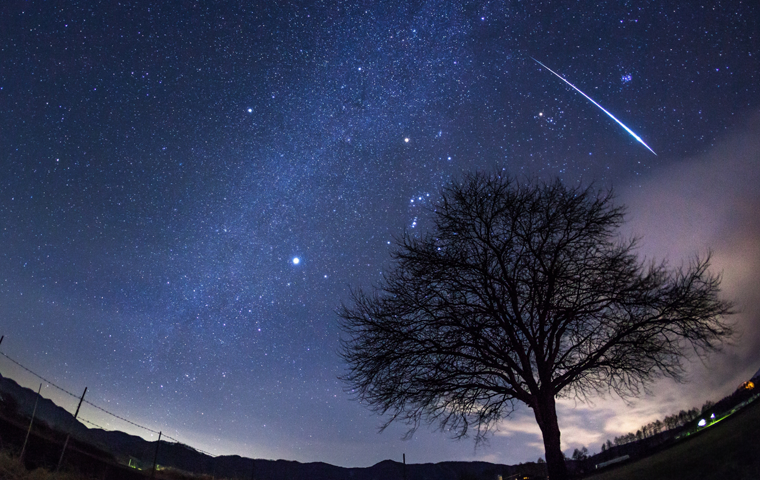After Three Years, a Coppery Red: Japan Watches a Total Lunar Eclipse
Related Articles
A Midnight Double Bill: Japan Thrills to Its First Celestial Show in Three Years

In the early hours of Monday, September 8, 2025—while many were fast asleep or savoring a quiet moment before a new week—a grand cosmic drama unfolded silently above Japan. For the first time since November 8, 2022—roughly three years—a total lunar eclipse was visible across the entire country. The spectacle captivated not only astronomy enthusiasts but also the general public, sparking excitement nationwide despite the late hour.
This eclipse was especially favorable because the entire sequence could be observed from within Japan. According to a nationwide timeline released in advance by the National Astronomical Observatory of Japan and various media, the show began around 1:27 a.m. on September 8, when the full Moon touched Earth’s darkest central shadow, the umbra, and the partial phase commenced. In the southwest sky, the bright Moon appeared to be nibbled away by some immense force—an overture to the drama ahead.
The climax arrived around 2:30 a.m., when the Moon slipped fully into Earth’s shadow and totality began. Around 3:12 a.m. the eclipse reached maximum, as the Moon passed through the shadow’s deepest, central portion. Totality lasted about 82 minutes and ended around 3:53 a.m. The Moon then returned to a partial phase, gradually regaining its brilliance before emerging completely from Earth’s shadow around 4:57 a.m., resuming the face of a familiar full Moon.
Of special note was the meaning of this full Moon. In traditional Native American naming, the September full Moon is called the “Corn Moon,” symbolizing abundance and harvest. The spectacle of this Corn Moon being completely cloaked by Earth’s shadow was poetic in itself and stirred many imaginations.
Yet there was a major “hurdle” for would-be eyewitnesses in Japan: timing. Taking place in the small hours of a Monday—the start of the work and school week—the event forced most adults and students to balance astronomy with real-world schedules. As one science museum’s report put it, “If you want to enjoy the event in real time, be prepared to pull an all-nighter,” making it not just a skywatch but a small act of everyday defiance. Even so, many fought off sleep because of the eclipse’s rarity: the next opportunity to view the full sequence of a total lunar eclipse across all of Japan will not come until 2028. That “see it now or miss it” urgency drove people outside into the night.
Down to One Ten-Thousandth: Experts Capture the Moon’s “Color Shift”
What most mesmerized observers was the dramatic change in color. At 2:30 a.m., once the Moon was fully immersed in Earth’s shadow, the bright white disk dimmed and took on a dark, eerie reddish tone known as “shakudō-iro,” or coppery red—often dubbed a “blood moon,” a sight that has inspired awe and curiosity since antiquity.
This haunting palette is a grand optical illusion wrought by Earth’s atmosphere. During totality, sunlight no longer strikes the lunar surface directly. Instead, a sliver of sunlight skims through the thick rim of Earth’s atmosphere, refracts, and reaches the Moon. In this process, the atmosphere acts as a colossal filter: shorter blue wavelengths scatter (the same reason our daytime sky is blue), while longer red wavelengths penetrate and bend toward the Moon. In other words, the light illuminating the eclipsed Moon is the sum of all the sunsets and sunrises happening around Earth at that moment—an irresistibly romantic mechanism that paints the Moon copper-red.
Detailed measurements revealed further wonders. A report from Kurashiki Science Center in Okayama noted that during totality the Moon’s brightness fell to less than one ten-thousandth of a normal full Moon. A disk that usually dominates the night sky nearly lost its light altogether.
This extreme dimming had an unexpected side effect: faint stars, usually washed out by full-Moon glare, emerged around the darkened Moon. Specialists reported that as the eclipse deepened “faint stars near the Moon became clearly visible,” and “in darker sites even the Milky Way appeared.” Thus a lunar eclipse is not only about watching the Moon change; by making the Moon briefly “vanish,” it grants a rare window into the true depth of the starry sky—letting many witness a coppery Moon set against a Milky Way backdrop.
Some keen observers also looked for the “turquoise fringe,” a fleeting blue-green rim seen when the Moon enters or exits the umbra. This tint is thought to arise when sunlight passing through the upper atmosphere—especially the ozone-rich stratosphere—has its red components absorbed, leaving a bluish cast. According to Kurashiki Science Center, however, “perhaps due to less-than-ideal atmospheric transparency this time, even enhancing image saturation did not reveal much bluish color.” The result underscored how an eclipse’s hues mirror Earth’s atmospheric state (dust, water vapor, etc.), making lunar eclipses a sensitive “diagnostic tool” of the Earth–space connection.
“Sleepy but Worth It”: On-the-Ground Reports and Social-Media Buzz
Though visible across Japan in principle, the eclipse’s success ultimately hinged on weather. On September 8, conditions diverged sharply between the Pacific and Sea of Japan sides.
Along the Pacific side, a stubborn heat high brought severe late-summer heat by day—Kofu hit 37.7°C and central Tokyo logged a record fourth September “extreme heat day”—but rewarded night owls with crystal-clear skies ideal for observing. Despite some urban complaints—“poor air makes imaging hard”—many areas around Tokyo could see the show.
The Sea of Japan side fared far worse. Vigorous rain clouds developed, with heavy downpours in parts of San’in and Hokuriku. At Niigata Airport, rainfall reached 63.5 mm in a single hour—like “a waterfall”—denying residents any glimpse of the long-awaited spectacle.
The duel with sleep and the gamble with weather played out in real time on social media, especially X (formerly Twitter), turning the nation into one vast, shared observing room.
From clear-sky regions came a flood of excited posts. From Sapporo: “We checked the forecasts, believed we could see it, and watched almost the whole thing from our balcony.” The phrase “sleepy but I saw it” captured many watchers’ feelings. Praise poured in for the otherworldly beauty—“the coppery Moon took our breath away,” “got to see a dreamy blood moon,” “the color change was so enchanting.” In Tokyo, photos captured the city’s iconic Skytree sharing the frame with the reddened Moon—urban astronomy at its finest.
The event also highlighted a modern duality: “geographical divides” imposed by weather, and “real-time unity” enabled by technology. People clouded out—or duty-bound to early Monday mornings—turned to live streams.
Broadcasters like Weathernews, Kurashiki Science Center, and Tenrif Video streamed on YouTube, drawing tens of thousands despite the hour. Through chat, viewers shared the moment nationwide: “I tried from midnight, but the muggy heat and sleep got me—so I watched a YouTube live until dawn.” “Saw the best red Moon in ages—thanks to everyone who streamed!” Even when in-person viewing was hard, technology let anyone become a “witness” to the sky—a distinctly contemporary style of stargazing.
A Date with 2028: How the “Blood Moon” Rekindled Curiosity About the Cosmos

Despite the near-worst timing—the start of the week—and lashing rains in some regions, the total lunar eclipse of September 8, 2025 became a nationwide social moment. People rubbed sleepy eyes, rode the emotional roller coaster of changing skies, and used SNS and live streams to share a long-awaited celestial show.
The night grew more special thanks to a second act in the sky. Near the copper-hued Moon shone Saturn, the ringed giant, appearing close from the evening of the 8th through dawn on the 9th. Saturn was approaching opposition on September 22—its brightest, most observable period—making this an ideal time. With the Moon dimmed by totality, Saturn’s splendor beside it created a lucky “bonus” double bill.
Rarity lay at the heart of the excitement: miss this, and the next chance to see a total lunar eclipse’s entire sequence under favorable conditions nationwide won’t come until 2028. That fact powerfully fed the “don’t miss it” impulse.
In sum, on the night of September 8, 2025, people across Japan looked up—each in their place, each in their way. As Earth’s shadow dyed the Corn Moon a coppery red and its light fell to one ten-thousandth of normal, observers sensed both the delicacy of Earth’s atmospheric veil and, beyond it, the vastness of the Milky Way. Social feeds brimmed with comments like, “We enjoyed it as a family—looks like the kids caught the astronomy bug,” and “A great chance to spark interest in the mysteries of the universe and natural phenomena.” The eclipse proved more than a visual delight: it stirred curiosity and strengthened a living bond with the cosmos.
Until our next “promised” date three years hence, the memory of that ethereal, copper-red Moon will remain a steady ember—reminding busy hearts of the universe’s grandeur.



